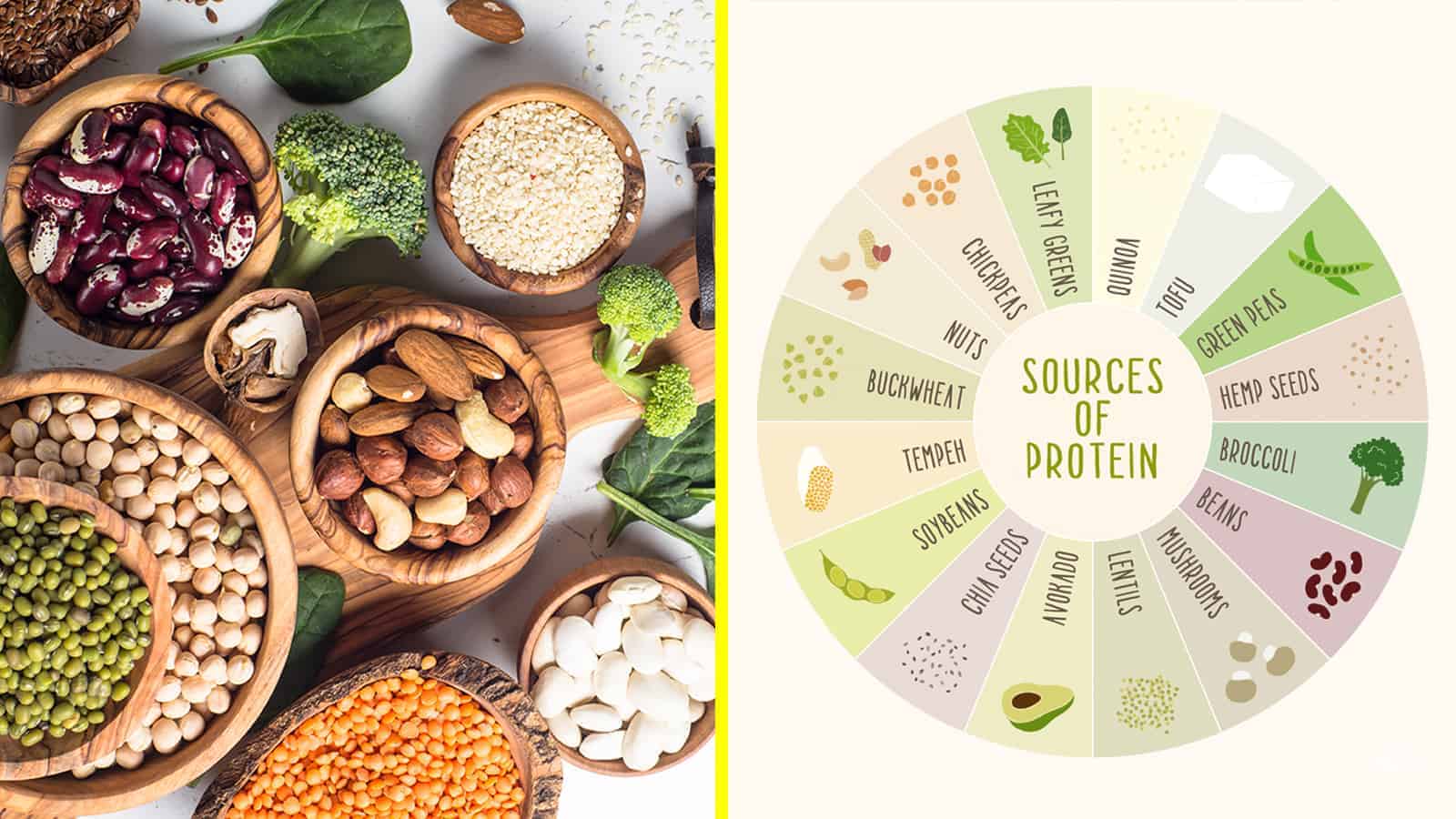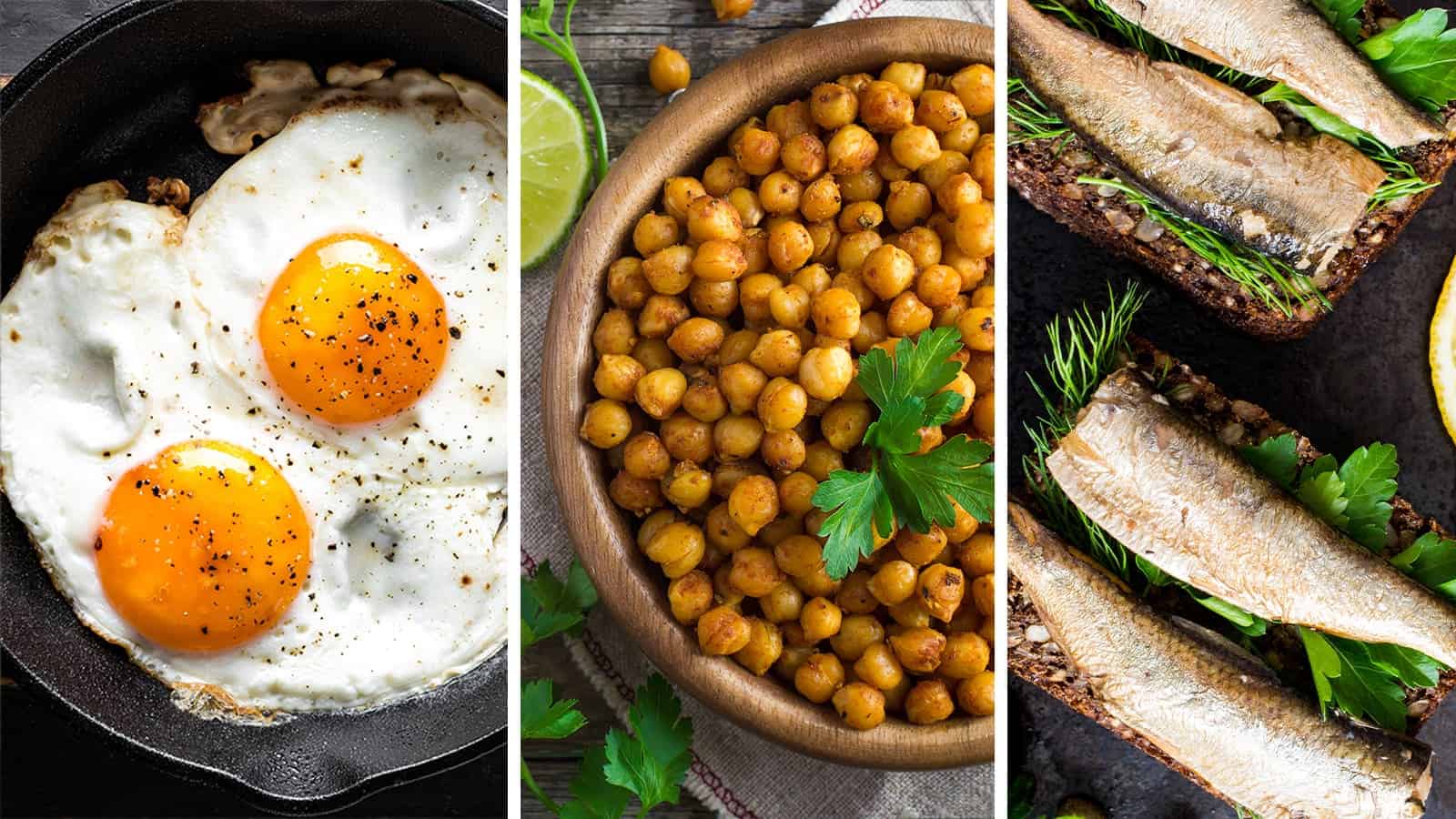Are you thinking about going meat-free? A plant-based diet is a healthy diet alternative, but be you’re eating enough protein. Here are 20 plant-based protein sources you shouldn’t ignore when you start your new diet.
Plant-based diets win hands down.
Plant rich diets are packed with health benefits. Studies conclude that eating a plant-based diet lowers your chance of heart disease, chronic illness, and type 2 diabetes. Eating a diet of mostly plants also helps you manage your weight and reduces your need for medications.
However, one of the key considerations when transitioning to a plant-based lifestyle is ensuring you’re getting enough protein to support your body’s needs. Luckily, there are plenty of plant-based protein sources that can help you achieve your nutritional goals, ensuring you get the balance you need for optimal health.
For those looking for convenient and delicious ways to incorporate more plant-based protein into their diet, Isagenix offers an excellent range of products. Their plant-based protein drinks are a fantastic option for anyone needing a quick and nutritious boost. Packed with high-quality plant protein from ingredients like pea and brown rice, these drinks provide all the benefits of a plant-based diet while helping you meet your daily protein requirements.
Perfect for busy individuals or those who prefer an on-the-go solution, Isagenix’s plant-based products are not only great-tasting but also formulated to support muscle recovery, energy levels, and overall health. By incorporating Isagenix into your routine, you can confidently navigate your new diet while still fueling your body with the nutrients it needs to thrive.
So where do vegans get their protein?
One of the biggest questions you’ll get asked when you go meat-free is where do you get your protein? Animal products are typically the largest source of protein in most American diets. But one study found that the Estimated Average Requirement (EAR) for protein is only 2.1 cups a day. Researchers say in the western world, the average person eats well beyond this requirement. This same study concluded that the protein in vegetarian diets meets the recommended requirements, including having the right amount of amino acids.
What are the best plant-based proteins?
It’s easier than you think to find plants with protein. Here’s a list of some of the healthiest plant-based proteins to add to your daily diet.
1 – Whole grain pasta
A ½ cup of some type of whole-grain pasta gives you 6 grams of protein. If you pair your whole- grain pasta with asparagus or spinach, you’ll double the amount of protein in one meal. Examples of whole-grain pasta include
- Brown rice pasta
- Whole-wheat couscous
- Buckwheat pasta
- Quinoa pasta
- Spelt pasta
- Corn pasta
2 – Popcorn
Even though popcorn doesn’t have the highest amount of protein, only 4 grams per 3 1/2 cups, it’s high in fiber. When you combine popcorn’s high fiber, protein, and a low-calorie count, it’s an excellent healthy snack for plant-based eaters.
3 – Oats
Oats are an economical whole grain to add to your diet. One half a cup of oats for breakfast gives you 17 grams of protein. If you add one cup of almond milk with 2 grams of protein to your oats, you increase your protein to19 grams. That’s a great way to start the morning.
4 – Potatoes
Potatoes get no respect. It’s easy to overlook this veggie as not that healthy. But the humble potato is not only versatile, but it also contains 2 grams of protein per potato. When you add a couple of potatoes to your meal, you’re adding healthy protein and fiber.
Sweet potatoes contain a bit less protein than regular variations, but they contain antioxidants responsible for fighting off free radicals and toxins.
5 – Edamame
Edamame is a young soybean you eat straight out of the pod. Edamame can be steamed, roasted, or microwaved. Drizzle some olive oil over the seeds and add a pinch of kosher salt—microwave for three minutes.
Enjoy edamame as a savory appetizer or a snack in the evening. Edamame contains 11 grams of protein per half-cup, so it’s a great way to get a bit of protein.
6 – Spinach
This dark leafy green vegetable is crunchy with a tangy flavor. Whether you steam it, saute it, or eat it raw, you get 3 grams of protein in every half a cup of spinach.
Add a couple of leaves of spinach to your morning smoothie for some extra vitamins K, A, C, B6, and B2. Spinach is also high in folate, manganese, and calcium.
7 – Tofu
Tofu is made from soy milk bean curd that has been pressed into blocks. It comes in a soft, firm, or extra firm block. Tofu packs 15 grams of protein per half-cup. Tofu has a bland taste, but you can add spices or sauces to it for more flavor. You can also fry it in strips for dipping. Tofu makes a great mid-afternoon snack or main dish entrée at dinner.
8 – Avocados
Avocadoes add protein plus healthy fat to your diet. You can eat them raw or make guacamole, a tangy dip for tortilla chips or carrots. Whether you dress your avocado up or down, they’re incredibly versatile. You can even make a substitute chocolate dessert using avocados. Now that’s versatility.
9 – Tempeh
Tempeh is often called tofu’s closest relative. It has more protein than tofu, 20 grams per half a cup. Tempeh comes from cooked and fermented soybeans. Once this mixture is pressed into a block, it’s called tempeh. Some people say tempeh tastes like mushrooms. You can grill it, saute it, or eat it raw crumbled in your salad.
10. Asparagus
Asparagus is often thought of as a spring vegetable. Fortunately, you can buy it all year round in most groceries. This vegetable is high in antioxidants, folate, fiber, and protein. Some gardeners like to grow asparagus in their backyard. It’s a perennial that comes up every year in the spring. Ask your local gardening store if they carry asparagus and try growing it in your backyard.
11 – Dried apricots
Dried fruits are often more nutritious than raw fruits. This is the case with dried apricots. One-half cup of dried apricots contains four and a half grams of protein. This sweet dried fruit makes a great snack alternative to candy or chips.
12. Pinto beans
Pinto beans are high in fiber and protein. Like other legumes, you must cook the dried beans before you eat them unless you buy pinto beans in a can. They can be used in soups, dips, and even made into a burger. They are very economical, so keep a few in your pantry when you want a quick protein dish.
13. Lentils
Like all legumes, lentils are full of fiber and protein. They come dried, but you simply cook them 20 minutes to make them soft. After cooking, the lentils can be added to soups, salads, or eaten as a side dish. You can also wrap them in a tortilla for a delicious veggie Mexican burrito.
14. Black beans
Black beans are another economical legume that’s packed with protein and fiber. Like their cousin the lentil, black beans are dried, but you can buy them in the can, too. Black beans add flavor to salads, soups, side dishes, and dips. Store extra cans of black beans for an easy throw-together meal.
15. Chickpeas
Over the past decade, chickpeas have grown in popularity. When blended with lemon juice, garlic, and cumin, chickpeas make a delicious dip called humus. Humus is a protein-rich dip for pita chips, carrots, or celery. If you don’t care to make hummus, use your chickpeas straight from the can on your salad, in soups, or toppings on other side dishes.
Some people like to make crunchy chickpeas. Sprinkle the chicken peas with salt, spices, and olive oil. Then roast them in a 400-degree oven for 20 minutes. These crunchy chickpeas are a healthier alternative to potato chips.
16 – Pumpkin Seeds
Pumpkin seeds give you an impressive 25 grams of protein per half-cup. These crunchy little seeds also contain zinc, magnesium, and healthy fat. You can buy them at most stores, but check to see that they are good quality and organic. Nonorganic brands often use chemicals in the processing of pumpkin seeds.
17 – Hemp seeds
Small but mighty describe hemp seeds. These tiny seeds are packed with protein and add a unique flavor to cookies, cakes, cereals, and smoothies. One downside of hemp is that if you overeat, it can cause diarrhea. Some people have been known to have other side effects such as throat irritation, nausea, high blood pressure, and a sometimes rapid heartbeat. So go easy on the amount of hemp you eat.
18 – Chia seeds
Chia seeds are another tiny seed with significant potential. They contain fiber, magnesium, and omega3s. Omega3 is found in fatty fish. You can sprinkle chia seeds on smoothies, oatmeal, or a lettuce salad. Some people even add them to their drinks.
19 – Flaxseeds
Flaxseeds are often called a superfood. Part of the list of seeds with the most protein, flax seeds also boost a variety of vitamins and minerals such as
- Copper
- Thiamine
- Magnesium
- Phosphorus
Add flaxseeds to your morning cereal, or your salad dressing at lunch. You can use flaxseeds in desserts that call for nuts.
20 – Peanuts
The humble peanut has 38 grams of protein per cup. They add healthy fat to your plant-based diet. Chop them, snack on them, or sprinkle them over your morning bowl of cereal for added protein and a nutty flavor. You can also make your peanut butter.
Throw a cup of peanuts into a food processor. Add a little coconut oil and salt. Blend until creamy. Spread on celery or whole wheat bread for your mid-day meal.
 Final Thoughts on How to Include Plant-based Proteins in Your Vegan Diet
Final Thoughts on How to Include Plant-based Proteins in Your Vegan Diet
Plant-based proteins are natural to include in your diet. Choose from legumes, seeds, nuts, leafy greens, or whole grains. Plant proteins are versatile and often go easy on your budget. Saute, roast, grill, or eat them raw. Pairing these plant-based proteins together can increase your daily protein levels. So when someone asks you where you get your protein on a meat-free diet, tell them you get plenty of protein from all the delicious plants you eat.





















